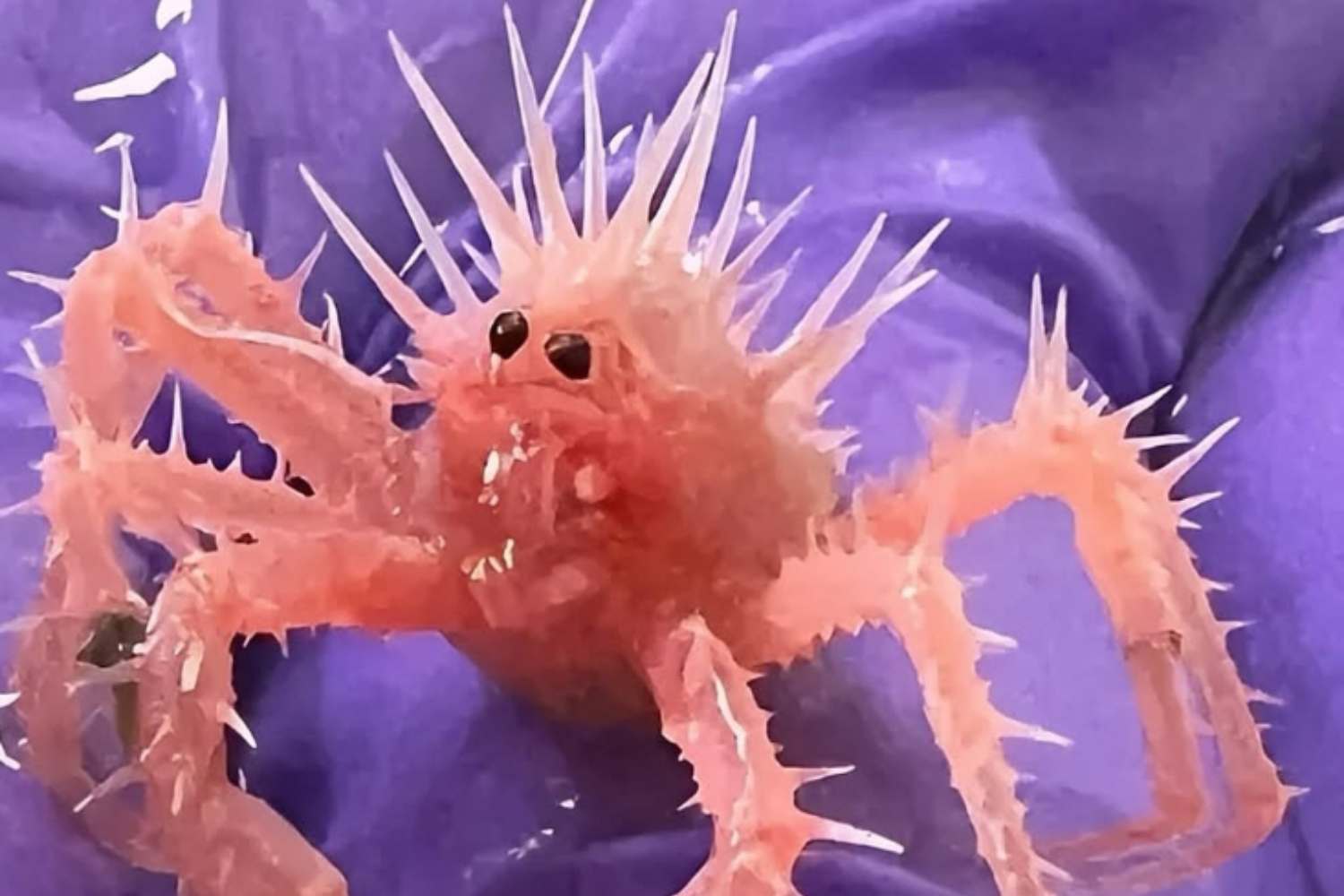A pink king crab the size of a finger, found during a Gulf cleanup dive, reveals the wonders of evolution—and the human footprint on the deep sea.

@NOAA Office of National Marine Sanctuaries/Facebook
During a routine cleanup dive in the Gulf of Mexico, NOAA researchers stumbled upon something that felt almost too whimsical to be real: a tiny pink king crab, no longer than a human finger. The creature appeared when scientists carefully pulled a plastic bag off deep-sea corals, part of an ongoing effort to restore habitats damaged by the Deepwater Horizon disaster in 2010.
The little crab was quickly identified as likely belonging to the species Neolithodes agassizii, known for its sharp spines and vibrant coloring. Despite its size—barely noticeable at first glance—the animal became a sudden online sensation. Videos of the crab perched on purple gloves, looking like a spiky alien ready for its close-up, spread across social media in a matter of hours.
The evolution and habitat of red king crabs
Adult Neolithodes agassizii live at depths between 650 and 6,200 feet (200–1,900 meters) and can grow up to five inches (12 cm) from head to tail, not including their long legs. Curiously, they aren’t “true” crabs at all but rather distant relatives of hermit crabs. Roughly 25 million years ago, their ancestors abandoned the need for a borrowed shell—a striking example of carcinization, the evolutionary process where unrelated species independently evolve into crab-like forms.
Juveniles, small and vulnerable, often rely on other creatures for safety. Some hitch rides on sea cucumbers, while others, like this little Gulf wanderer, seem to improvise—finding shelter in something as unlikely as a plastic bag. It’s an ingenious survival tactic, though also a sobering reminder of the human imprint on even the most remote ecosystems.
Guardians of the ocean floor
The specimen has now found a permanent home in the Smithsonian Institution’s invertebrate collection, where it will be available for future research into marine biodiversity and restoration projects in the Gulf. Despite their miniature size, these organisms play a vital role in maintaining the balance of deep-sea ecosystems.
Yet science isn’t the only reason this crab matters. Its alien-like charm has also captured public imagination, reminding us that the smallest creatures can inspire both wonder and reflection. As one NOAA researcher noted, encounters like this show us how even a pink, spiny little crab can underscore the urgent need to preserve our oceans and tackle plastic pollution before it becomes the only refuge left.
A tiny, spiky, bundle of cuteness! This little crab was found during an operation in the Gulf of Mexico which collected samples of mesophotic and deep-sea coral species for lab rearing and propagation.Credit: NOAA Office of National Marine Sanctuaries
Posted by NOAA Fisheries Service on Tuesday, January 7, 2025
